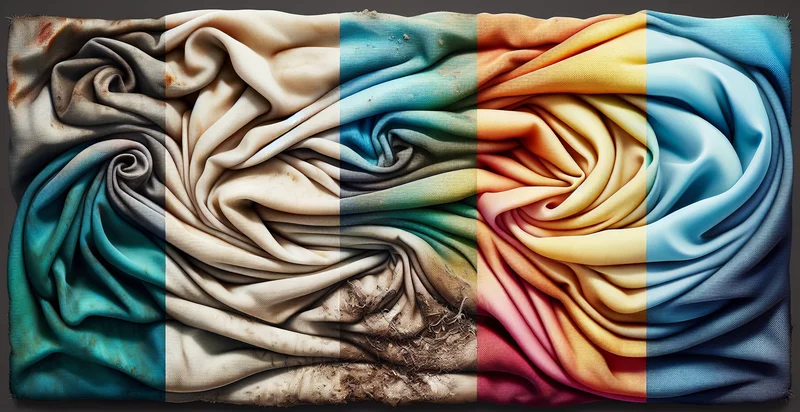Identify fabric cleanliness level
using AI
Below is a free classifier to identify fabric cleanliness level. Just upload your image, and our AI will predict the cleanliness level of the fabric. - in just seconds.

Contact us for API access
Or, use Nyckel to build highly-accurate custom classifiers in just minutes. No PhD required.
Get started
import nyckel
credentials = nyckel.Credentials("YOUR_CLIENT_ID", "YOUR_CLIENT_SECRET")
nyckel.invoke("fabric-cleanliness-level", "your_image_url", credentials)
fetch('https://www.nyckel.com/v1/functions/fabric-cleanliness-level/invoke', {
method: 'POST',
headers: {
'Authorization': 'Bearer ' + 'YOUR_BEARER_TOKEN',
'Content-Type': 'application/json',
},
body: JSON.stringify(
{"data": "your_image_url"}
)
})
.then(response => response.json())
.then(data => console.log(data));
curl -X POST \
-H "Content-Type: application/json" \
-H "Authorization: Bearer YOUR_BEARER_TOKEN" \
-d '{"data": "your_image_url"}' \
https://www.nyckel.com/v1/functions/fabric-cleanliness-level/invoke
How this classifier works
To start, upload your image. Our AI tool will then predict the cleanliness level of the fabric..
This pretrained image model uses a Nyckel-created dataset and has 5 labels, including Clean, Dirty, Extremely Dirty, Slightly Dirty and Very Dirty.
We'll also show a confidence score (the higher the number, the more confident the AI model is around the cleanliness level of the fabric.).
Whether you're just curious or building fabric cleanliness level detection into your application, we hope our classifier proves helpful.
Related Classifiers
Need to identify fabric cleanliness level at scale?
Get API or Zapier access to this classifier for free. It's perfect for:
- Quality Control in Textile Manufacturing: The fabric cleanliness level identifier can be integrated into textile production lines, allowing manufacturers to automatically assess and categorize fabrics based on cleanliness. This ensures that only clean fabrics are sent for further processing, reducing the risk of defects and improving overall product quality.
- Retail Inspection Compliance: Retailers can utilize this function to validate the cleanliness of fabric items before they are displayed for sale. By ensuring that only clean products reach the sales floor, businesses can enhance customer satisfaction and maintain compliance with health and safety standards.
- Laundry Service Optimization: Laundry services can apply this identifier to evaluate the cleanliness levels of fabrics received for cleaning. By categorizing items based on cleanliness, services can streamline processing workflows and prioritize items that require urgent attention, leading to improved throughput and customer service.
- Inventory Management for Fabric Suppliers: Fabric suppliers can use the cleanliness identifier to manage inventory more effectively. By assessing cleanliness levels before dispatch, suppliers can minimize returns and ensure that retailers receive only high-quality, clean fabrics, thereby reducing waste and operational costs.
- Sustainable Textile Development: Researchers and companies focused on sustainable textiles can leverage this function to monitor the cleanliness of recycled or upcycled fabrics. By determining cleanliness levels, they can better evaluate the viability of different materials for reuse, supporting eco-friendly practices in fabric production.
- Automated Online Retail Quality Assurance: E-commerce platforms can integrate the fabric cleanliness level identifier into their quality assurance processes. By assessing and verifying the cleanliness of products returned or inspected, platforms can ensure that only clean, high-quality items are sold to customers, enhancing brand reputation.
- Health and Safety Regulation Compliance: Organizations in the healthcare or hospitality sectors can utilize the function to monitor the cleanliness of fabrics used in sensitive environments, such as hospitals or hotels. This helps ensure compliance with industry regulations, as well as protect patient and guest safety by maintaining high hygiene standards.


